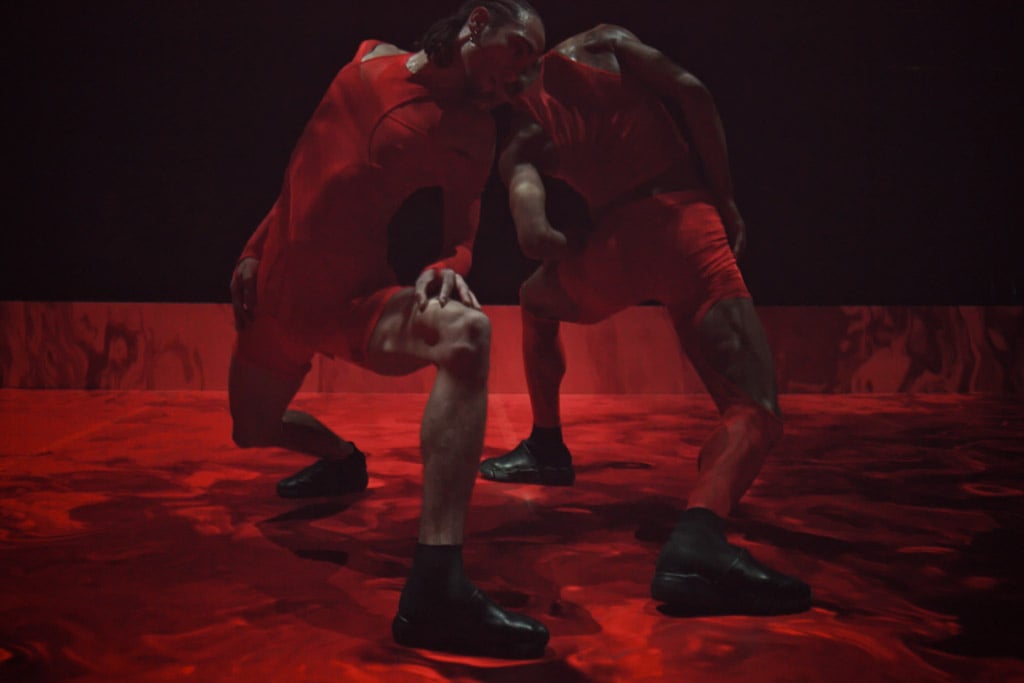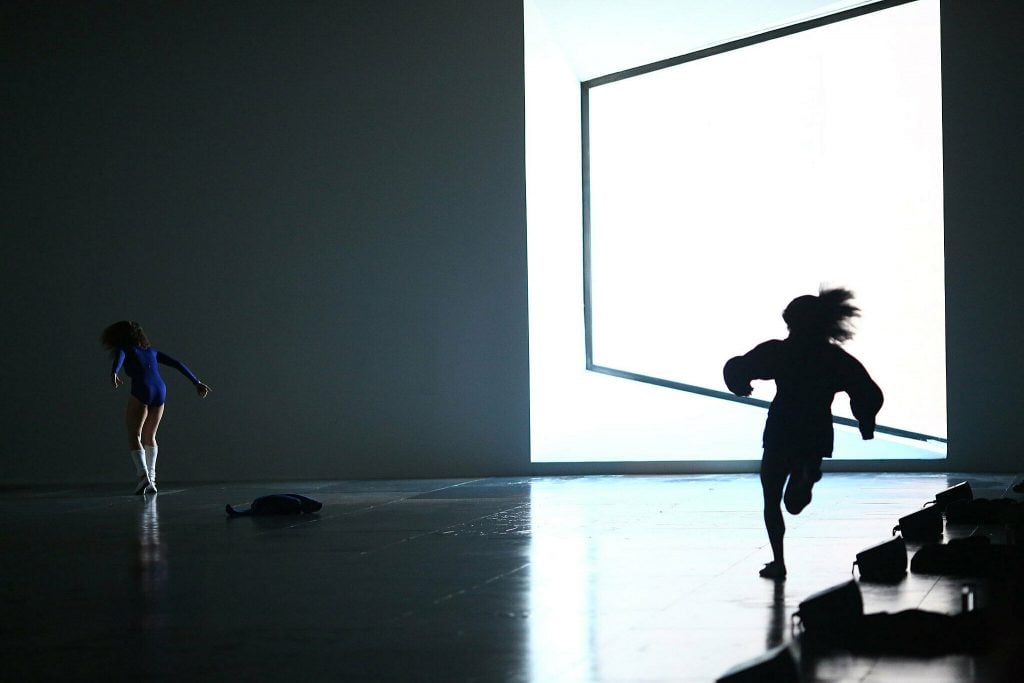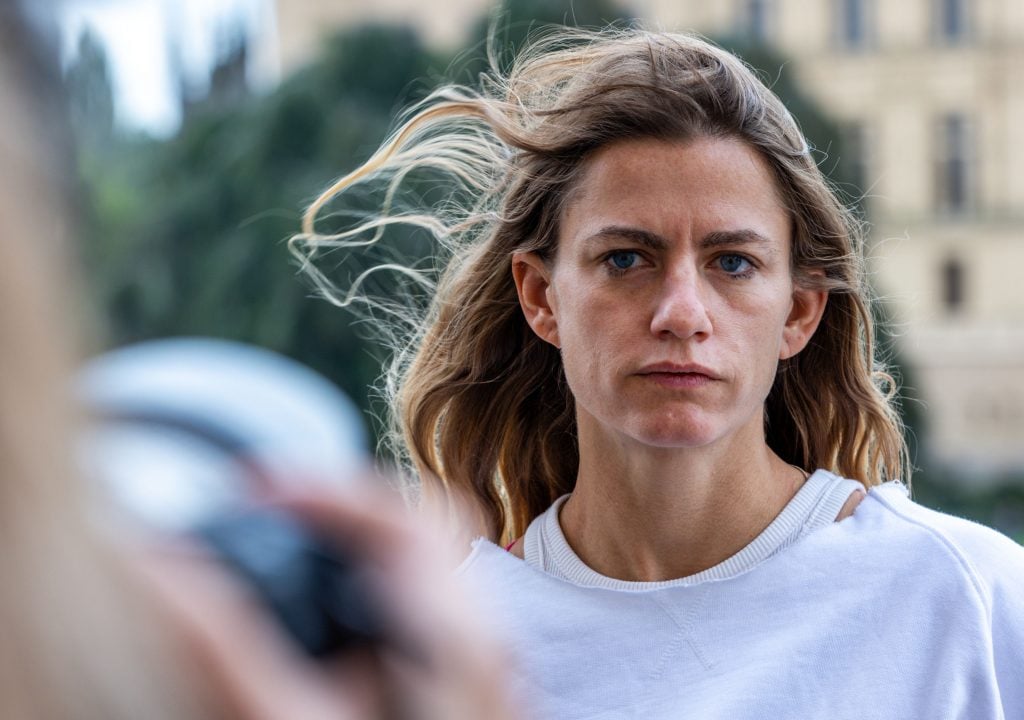
21 Oct Don't Resist the Movement: Dance Is Making Powerful Art World Forays
Source Credit: Content and images from Artnet News. Read the original article - https://news.artnet.com/art-world/dont-resist-the-movement-2556014
Dance and performance have always been essential components of the world of art. Dance is a primordial form of expression that has existed conterminously with fine art practices around the world. However, to many, it remains opaque or difficult to access because the engine of its distribution resists commodity and its legibility may seem to require a prerequisite knowledge of its forms and histories. But in the contemporary sphere of the art scene, more and more dance is appearing in arts institutions—not just museums and theaters, but also galleries and art fairs. The Whitney’s current “Edges of Ailey” positions the choreographer as an essential part of the American art canon alongside painters, sculptors, and video artists. These new platforms allow for a different audience to experience work that has curiously seemed apart for many. But to know where to start can be daunting especially if you are not familiar with the artist.

Edges of Ailey (Whitney Museum of American Art, New York, September 25, 2024-February 9, 2025). Courtesy of Whitney Museum of American Art; Photo: Natasha Moustache.
What follows is an enumeration of several dance artists that are making intriguing work and shaping the discourse at the moment. While this is not an exhaustive list by any means; its directional, encouraging you to develop a taste for what you like in performance and make informed decisions to follow where your interests lie. Like attracts like, as they say, and so you will often find more of the type of work you want to see when following a choreographer’s career and the community they work within.
In the contemporary dance realm, there is a hackneyed trend where staging a “rave” inside an institution is supposed to produce a discourse on utopian ideals of radicalized political spaces that dancefloors are purportedly creating. However, in a world of nightlife-in-the-proscenium inspired dance, Shamel Pitts is making the only work that matters. Pitts, who was just named a 2024 MacArthur Fellow, founded the Brooklyn–based Afrofuturist arts collective TRIBE. His dance methodology is multifaceted, taking from Ohad Naharin’s Gaga, a pedagogy and movement language, classic ballet, and his own extensive experience dancing late at night in clubs around the world. This practice doesn’t seek to elucidate the liberatory experience of movement with others at Berghain but invites the viewer to bear witness to Pitts’s personal experience and collaborations.

Touch of RED: Shamel Pitts and Tushrik Fredericks (Mass MoCA, Oct .22). Photo: Adeboye Brothers.
His latest piece, TRIBE: Touch of Red (2023–ongoing), premiered at New York Live Arts last year and will be remounted at the Walker Art Center in Minneapolis March, is a duet that combines Lindy Hop, contemporary movement, and nightlife with slick stage and costume design. Touch of Red explores masculine intimacy and intensity through the two dancers, Pitts and Tushrik Fredericks, encircling, embracing, and retreating from one another inside of a stylized boxing ring. Pitts, who is known for his elaborate staging and pulsing music/poetry, gives animus to his monochromatic productions of small ensembles, either two or three dancers, through fascinating compositions and entanglements. His work TRIBE: BLACK HOLE—Trilogy and Triathlon (2018), features three performers who emerged as one organism, singular in their movements and connection points, but slowly fragment into their own subjects as the music pulses and they gain their own agency and regency. Pitts’s work largely explores this interdependence versus singularity dichotomy, reminding the viewer of how dance is a constant negotiation between the collective effervescence of movement and mental subjectivity.
In a world mediated by social media, Filipina-diasporic performer Joshua Serafin has achieved what few dancers hope to accomplish—viral notoriety. Their piece VOID (2022–ongoing), was featured in this year’s Venice Biennale. It is both a video installation and live performance and has been on tour around the globe since gracing everyone’s Instagram. This summer they performed VOID in New York at Amant Foundation in a completely spectator-filled parking lot beginning atop the adjacent rooftop with a sensuous nude writhing invitation to the audience and culminating in an oneiric dive into a pit of ectoplasm located in the center of the audience.

Joshua Serafin performs VOID. Photo: Garcia Jauregui
Serafin’s work explores, through lyrical movements and earth-pounding intensity, the cosmology of a queer/trans godhead birthed within the abyss. Their economy and mastery of material, in this case a super-viscous Vanta-black lubricant, recalls legacies of extraction of materials like oil, but their grace and bodily control of the substance allows it to metamorphize their own body—at times they are enrobed in the tar-like matter and then allow it to trail away from their arching limbs with tentacle intelligence.
People often refer to a certain brand of dance that eschews the primness of Lincoln Center ballet and the established company prestige of Alvin Ailey as “downtown dance.” There are no real formal or technical hallmarks that make downtown dance a definable monolith, its name comes from the concentration of experimental dance venues below 14th Street, but there is arguably a prodigal daughter to whom everyone often looks. Sarah Michelson, a Manchester—born, New York—based, MacArthur fellow choreographer has been creating some of the most exciting and technically rigorous work of the past twenty-or-so years. Dover Beach (2010), featured five dancers, three of them pre-teen girls, performing out of an ornate lattice cage-like structure a series of repeating rigorous extensions and mimetic gestures. Dover Beach’s punctum is the rigor in its movement vocabulary, a thematic that Michelson often returns to. If people judge ballet’s success on how effortless the movement seems to be, then Michelson is concerned with the exact opposite–exposing the labor and production.

Sarah Michelson, performance view of October 2017. The Kitchen. Photo: Paula Court.
In her Devotion series, which won the 2012 Whitney Biennial’s Bucksbaum award, Michelson unleashed her analytical work upon the arts institution. In its four parts, staged sequentially at The Kitchen, 2011, the Whitney Museum 2012, the Museum of Modern Art, 2012, the Whitney again in 2014, female dancers’ precision and lyrical physicality is played against the exhaustive efforts of their male counterparts. The Devotion series takes up Michelson’s career-long examination of the notion of virtuosity—a shibboleth of the dance world—and deconstructs how the context of the arts institution amplifies its purported virtues. These works are precisely staged, choreographed, and scored alluding to masters of contemporary dance Twyla Tharp, Merce Cunningham, George Balanchine, as well as the curators who commission the work, but these are not the objects of Michelson’s devotion in these works. It is her dancers. Since getting representation by David Zwirner in 2023, Michelson has continued her dance work; helping the gallery create a residency for other performers, alongside an object-based praxis.

Performance view of Non Griffiths, Dover Beach (2009), The Kitchen, New York City. © Paula Court.
For many artists the social and political valence of their work is paramount to the piece itself. Brazilian choreographer Lia Rodrigues, who has been creating work since the late 1970s, has made social engagement the cornerstone of her work and company Lia Rodrigues Companhia de Danças, founded in 1992. In 2004, she founded the Centre for Art of Maré, a cultural center and educational facility in the favela of Maré on the outskirts of Rio de Janiero which also houses the Free Dance School of Maré. This school offers workshops and classes to all residents of Maré to train with her company to develop work. Her relationships with the community that makes up her company has fashioned fantastical pieces that read like parables and ghost stories collaged from indigenous Brazilian folklore and ecstatic spiritual possession.
Encantado (2021), fabricates a universe where eleven dancers embody different spirits, or encantados, of healing or puckish glee through associative movement structures. The stage is covered in hundreds of garishly-colored, cheap fleece blankets while performers emerge from underneath the fabric and off-stage to transform themselves into a variety of characters using the materials as mask, dress, headwrap, or horns. Throughout the work, the performers embody hundreds of these spirits giving a sense of the encantados moving through and being passed around dancers. It is a work made during the calamitous presidency of Jair Bolsonaro in which the only response seemed to be a return to enchantment. Her work Fúria (2018), takes on similar themes of embodied characters and material ecologies of the favela, but directly deals with concepts like domination, tenderness, lust, and fury, in which performers use one another as structures to perform atop of and create slowly progressing images of social segregation and power disparity. While the North American audience could regard this work as a sort of bathos in the social systems of the Global South, Rodrigues is cleverly masking her critiques in the idioms of the communities she works within to explore the conditions of living in Brazil.

Brazilian choreographer Lia Rodrigues poses during a photo session at the Theatre National de Chaillot in Paris on November 29, 2021. (Photo by STEPHANE DE SAKUTIN / AFP) (Photo by STEPHANE DE SAKUTIN/AFP via Getty Images)
Systems of funding for dance oftentimes determine the level of ambition that a performer can attempt while making a work. In Europe, these systems of funding are more generous, sometimes State-supported, and has produced a culture of dance that is grand and dizzying in scale. The Austrian choreographer Florentina Holzinger has taken every advantage of these funding models and produced some of the most memorable gesamtkunstwerks of the past five years. Holzinger came to the attention of the performance world with her early collaborations with dancer Vincent Riebeek, both of whom studied at Amsterdam’s School for New Dance Development, making strangely grotesque and campy duets about gendered power struggles in violence and sex through the logic of Viennese Actionism. Her solo work delves into even further extremes.
Watching a Holzinger work is to be squarely seated inside someone’s mania where the illusion of danger is tightly controlled by professionals exhibiting the precarity of their bodies. Tanz (20019), which is being staged at NYU Skirball center in February next year, starts as a classic ballet studio with students being instructed on performing Le sacre du printemps, but quickly evolves Goya-esque rituals of performers learning how to master their own bodies as they are hoisted aloft by their hair or nakedly writhe on suspended motorcycles. This is common structure in Holzinger’s work: a seemingly recognizable situation is upended into post-dramatic fantasy that strains the confines of the narrative.

19 September 2023, Mecklenburg-Western Pomerania, Schwerin: Performance star Florentina Holzinger is photographed before her planned opera project, “Sancta Susanna” by Hindemith, first performed in 1922, is to be supplemented with a “feminist mass” with new compositions and sacred music. Photo: Jens Büttner/dpa (Photo by Jens Büttner/picture alliance via Getty Images)
In Ophelia’s Got Talent (2023), common female mythological characters like mermaids, sirens, and the titular Shakespearean character populate the stage as each competes in a talent show wherein grotesqueries and violence is aestheticized without moralizing the performer, but rather the misogyny that undergirds this talent search. Her latest work, Sancta (2024), based on Paul Hidemith’s 1921 Sancta Susanna, revolves around a young nun’s struggle with her feelings of lust and mutilation is akin to Ken Russel’s The Devils as envisioned by performance artist Ron Athey staged at the Mecklenberg State Theater. Sancta has already garnered controversy in the press with stories circulating of audience members seeking medical attention during the opera, but Holzinger’s visionary work is uncompromising and unflinching in its insistence on technical perfection and exhaustive brutality to showcase a vibrant community of performers who can use any platform of abuse to create art.

SANCTA von Florentina Holzinger Vorstellungen in der Volksbühne am 15. und 16. November 2024 Netti Nüganen, Jasko Fide, Cornelia Zink © Nicole Marianna Wytyczak
As a place to start, these are five different artists with very different world-building strategies to making work, but they all share a grand vision for blending multimedia installation, stagecraft, and dance. There are many other choreographers and performers making radical work that is reshaping performance like Ligia Lewis, Niall Jones, Young Boy Dancing Group, Trajal Herrel Moriah Evans, and mayfield brooks. However, what makes time-based-art forms an exciting and frustrating medium is that the only way to experience these works, is to make sure you catch the show when it is being performed. So, you must follow the careers of the artists closely, or you may just miss out on the conversation.
Source Credit: Content and images from Artnet News. Read the original article - https://news.artnet.com/art-world/dont-resist-the-movement-2556014

